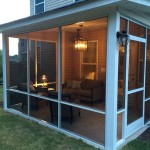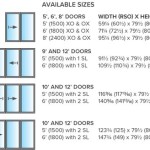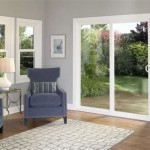```html
Backyard Patios and Decks: Enhancing Outdoor Living
Backyard patios and decks represent significant investments in outdoor living spaces. They provide areas for relaxation, entertainment, and dining, effectively extending the functionality of a home beyond its interior walls. The selection of the appropriate type of patio or deck, along with careful planning and consideration of materials, plays a crucial role in maximizing the value and enjoyment derived from these outdoor extensions.
These outdoor structures not only enhance the aesthetic appeal of a property but also contribute to its overall market value. A well-designed and constructed patio or deck can significantly improve curb appeal and create a sought-after amenity for potential buyers. Therefore, homeowners should approach the design and construction of these spaces with careful consideration of their long-term impact.
The decision to build a patio or a deck often depends on several factors, including the existing landscape, budget constraints, intended use, and aesthetic preferences. Patios are typically ground-level structures made from materials like concrete, brick, stone, or pavers. Decks, on the other hand, are raised platforms constructed from wood, composite materials, or aluminum. The choice between the two has implications for construction costs, maintenance requirements, and the overall look and feel of the outdoor space.
Key Considerations Before Constructing a Patio or Deck
Before embarking on a patio or deck project, a thorough assessment of several key factors is essential. These considerations will help to ensure that the final product meets the homeowner's needs and expectations while also complying with local building codes and regulations.
The first crucial step involves defining the intended use of the outdoor space. Will it primarily serve as a dining area, a relaxation zone, or an entertainment space for large gatherings? Understanding the intended use will inform the size, layout, and features of the patio or deck. For example, a dining area will require adequate space for a table and chairs, while an entertainment area may necessitate provisions for outdoor seating, a grill, and potentially an outdoor kitchen.
Budgetary constraints also play a significant role in the planning process. The cost of building a patio or deck can vary widely depending on the size, materials, and complexity of the design. It is crucial to establish a realistic budget and to obtain quotes from multiple contractors to ensure that the project remains within financial reach. When considering budget, it is important to factor in not only the initial construction costs but also the long-term maintenance expenses associated with the chosen materials. For example, wood decks may require regular staining or sealing to prevent rot and decay, while concrete patios may need occasional cleaning and sealing to maintain their appearance.
Local building codes and regulations must also be carefully reviewed before any construction begins. Most municipalities require permits for patio and deck construction, and these permits often come with specific requirements regarding setbacks, height restrictions, and safety features. Failure to comply with these regulations can result in fines and delays, so it is essential to obtain the necessary permits before commencing any work. Furthermore, homeowners should be aware of any homeowner association (HOA) rules or restrictions that may apply to outdoor construction projects.
Material Selection: Durability, Aesthetics, and Cost
The choice of materials for a patio or deck is a critical decision that will impact the structure's durability, aesthetics, and overall cost. A wide range of materials is available, each with its own unique set of advantages and disadvantages. Careful consideration of these factors is essential to ensure that the chosen materials are well-suited for the intended use and the local climate.
For patios, popular material options include concrete, brick, stone, and pavers. Concrete is a versatile and relatively inexpensive option that can be poured in place or precast into various shapes and sizes. It is durable and low-maintenance but can be prone to cracking in extreme weather conditions. Brick offers a classic and timeless look, providing excellent durability and resistance to weathering. However, brick patios can be more expensive to install than concrete patios. Stone, such as flagstone or slate, provides a natural and elegant aesthetic. It is highly durable and resistant to weathering but can be the most expensive option. Pavers are interlocking blocks made from concrete or clay that offer a wide range of colors, shapes, and patterns. They are relatively easy to install and maintain and provide excellent durability.
For decks, the primary material choices are wood, composite materials, and aluminum. Wood decks offer a natural and warm aesthetic but require regular maintenance to prevent rot and decay. Common wood options include cedar, redwood, and pressure-treated lumber. Cedar and redwood are naturally resistant to decay but are more expensive than pressure-treated lumber. Composite decking is made from a mixture of wood fibers and plastic, offering excellent durability and low maintenance. It is resistant to rot, insects, and fading, making it a popular choice for homeowners who want a long-lasting and low-maintenance deck. Aluminum decking is a relatively new option that offers exceptional durability and resistance to weathering. It is lightweight and easy to install but can be more expensive than wood or composite decking. Also, homeowners should consider the environmental impact of the materials they choose. Opting for sustainably sourced wood or recycled composite materials can help to minimize the environmental footprint of the project.
Each material has unique qualities. For instance, the texture of the material can greatly impact the usability of the patio or deck, with rougher surfaces being better suited to areas with heavy foot traffic, while smoother surfaces are better for areas with furniture. Color choices also play a role in the overall aesthetic, and should be carefully considered alongside the existing architecture of the house and the surrounding landscape.
Design and Layout Considerations
The design and layout of a patio or deck should be carefully planned to maximize its functionality and aesthetic appeal. A well-designed outdoor space will seamlessly integrate with the surrounding landscape and enhance the overall enjoyment of the property.
One of the primary considerations is the size of the patio or deck. The size should be proportional to the size of the house and the surrounding yard. A patio or deck that is too small will feel cramped and uncomfortable, while one that is too large may overwhelm the space. The size should also be determined by the intended use of the space. A dining area will require more space than a simple relaxation zone. Consider the number of people who will typically use the space and the amount of furniture that will be accommodated.
The layout of the patio or deck should be designed to maximize flow and functionality. Consider the placement of furniture, walkways, and access points. Ensure that there is adequate space for movement and that the layout is conducive to the intended use of the space. For example, a dining area should be located close to the kitchen for easy access to food and drinks. A relaxation zone should be located in a quiet and secluded area of the yard. The location of the sun at different times of the day will also play a role in deciding the best layout. Planning for shade during the hottest parts of the day is crucial for creating a comfortable outdoor space.
Additional features, such as built-in seating, planters, and outdoor kitchens, can greatly enhance the functionality and aesthetic appeal of a patio or deck. Built-in seating provides comfortable and permanent seating options. Planters add greenery and color to the space, creating a more inviting and relaxing atmosphere. Outdoor kitchens allow for convenient outdoor cooking and entertaining. The addition of a fire pit or fireplace can extend the usability of the outdoor space into the cooler months. Lighting is also an important consideration. Proper lighting will enhance the ambiance of the space and provide safety for nighttime use; options such as string lights, spotlights, and landscape lighting can all be considered. The design should also consider the integration of these features in a cohesive and aesthetically pleasing manner.
```
Outdoor Deck And Patio Ideas Aspen Designs

34 Comfy Backyard Patio Deck Designs Ideas For Relaxing Design

Unveiling 61 Stylish Patio Privacy Ideas For Your Relaxation Backyard Decks Deck Designs

15 Gorgeous Deck And Patio Ideas You Can Diy Family Handyman

Deck Ideas 40 Ways To Design A Great Backyard Or Patio Sunset

Backyard Patio Ideas And Inspiration For 2024 Decks Com

32 Lovely Backyard Patio Decor Ideas And Remodel Backyardshed Backyardlandscaping Backyardplayhou Deck Designs

14 Backyard Deck Ideas To Upgrade Your Outdoor Space

45 Modern Deck And Patio Ideas Designs Renoguide N Renovation Inspiration

Outdoor Kitchen Deck And Patios Designs With Curves Amazing Decks
Related Posts








